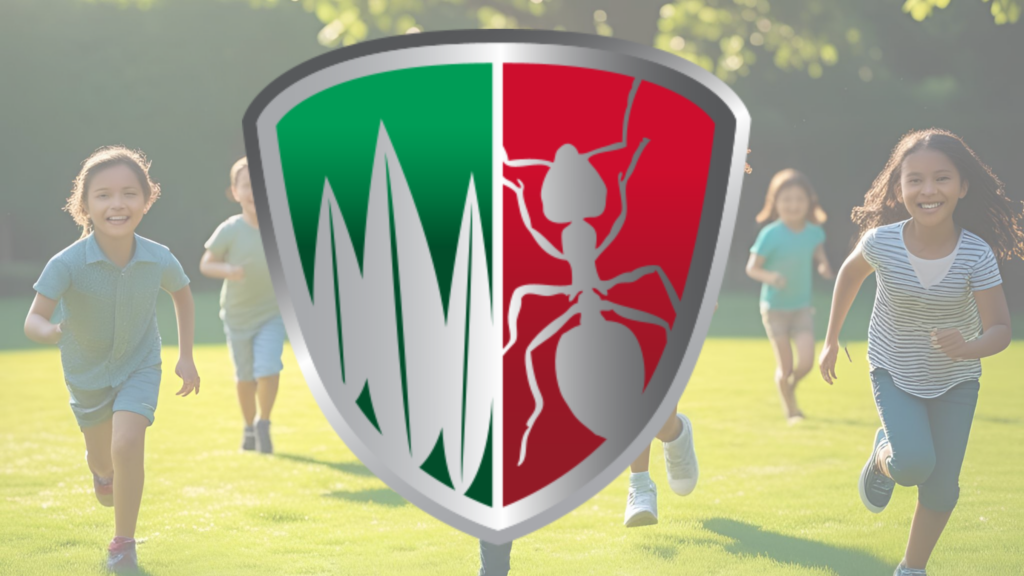Your goal is to maintain a beautifully lush, green, and healthy lawn—and, because fungi can be a real spoiler, you’ll likely need to incorporate fungus control into your overall lawn care program.

Lawn Fungus Control
To proactively protect your lawn against fungus, there are steps you can take. For example, watering your lawn early in the morning allows it to dry under the sun’s rays throughout the day. When watering at night, the water can lay stagnant and create the ideal breeding ground for fungi.
How you mow can make a difference, too. When mower blades are well sharpened, this allows you to actually cut your grass. Dull blades just rip off the tops of the blades and their frayed ends can leave them more susceptible to fungal disease. By keeping the blades clean, this may prevent the spread of any diseases to other parts of the lawn.
When you mow, only remove one third of the blades. This means you’ll mow more often, but this method helps to prevent weakening of the grass—with a healthy lawn better able to resist fungi. Fertilize appropriately (not too much and not too little), limiting nitrogen fertilizers on warm-season grasses in early spring and fall to small applications; remove dead grass, especially by thatching in areas where soil isn’t draining well; and aerate your soil, as needed. Prune trees and shrubs where there is shade to expose more of your lawn to the sun. These steps can work wonders as a form of lawn fungus control, but they’re not a guarantee of success.
Brown Patch Fungus
If, despite your best efforts, you see circles of brown, dying grass, you may have Rhizoctonia blight or, as it’s better known, brown patch fungus. If this problem isn’t addressed, it may spread across your entire lawn, destroying grass along the way. This type of fungi can affect cool- and warm-season grasses alike, which can include St. Augustine and zoysia grass. Problems arise most often from November through early spring in the Florida climate, commonly triggered by lengthy periods of high humidity, ongoing rainfall that creates extended damp periods, and over-irrigating.
In early stages, brown patch fungus may manifest itself in yellow patches that turn the color of straw or brown as more grass dies off. Small patches expand, reaching several feet across and, if the grass is closely cut, rings in hues of dark brown or dark gray indicate where the fungus is growing. Or the rings might encircle a patch of still-healthy grass.
Gray Leaf Spot Turf
If you’ve got St. Augustine grass in your lawn, you’ll need to monitor it for signs of gray leaf spot turf, a fungus that can destroy large swaths of your lawn when not quickly addressed. If you notice olive green or brown spots (oblong in shape) that turn gray in the middle, that’s what this type of fungi looks like. The borders can turn dark brown and, if the fungi has really taken hold, your lawn can actually look scorched. If you touch the affected blades, they’ll probably feel like felt.
This problem can develop in late May and extend through September, even October. That’s because lawns are most vulnerable to this type of fungi when temperatures are between 80°F and 90°F with humidity above 95%, and grass stays wet for longer periods of time. You may notice this problem in shady parts of your lawn first, and then the fungus can spread through irrigation runoff and through wind and rain.
Fungus Gnats Control
This tiny fly feeds on fungi (thus, their name) and so they’re found in soil and places where organic decomposition takes place. The problem arises when the larvae chew on plant roots and stunt their growth, sometimes even causing the plants to die. Although they’re more likely to damage plants in greenhouses and other indoor locations, including with potted plants, they can be a real nuisance outdoors—which why it’s important to include fungus gnats control in your overall lawn fungus control program.
Management methods should focus on the pupa/larva stages of development by reducing organic debris and excess moisture. If you see adults, they won’t be causing lawn problems, but they are an indication that young ones are nearby and possibly wreaking havoc with your grass roots.
Other Possibilities
If you notice a circle of mushrooms sprouting in your lawn, the good news is that you can pull them up and toss them in the trash. There are multiple types of fungi that could cause this problem, but they aren’t serious ones.
If you notice small yellow, orange, or white spots on turfgrasses, they may be suffering from the umbrella term of “rust.” Colors may darken to brown or black as the rust takes hold. This condition can occur via multiple fungi, usually because the area isn’t getting enough light or appropriate nutrients—with the problem worsening with humidity.
Still other issues include the dollar spot, which manifests in tan or straw-colored round spots on grass blades. They can spread to about six inches in diameter and are most prominent in autumn through spring. Take-all root rot, meanwhile, can cause serious damage to your lawn, especially when there is too much water or fertilizer application. You’ll first notice grass thinning out or irregularly-shaped yellow or light green patches.
Choose Turner for Fungus Control for Lawns
Here’s the good news. Proper yard care goes hand in hand with fungus control for lawns. Appropriate watering, fertilizing, mowing, and monitoring of conditions can go a long way towards a beautiful and healthy yard. A lawn fungicide may need to be applied, but it must be the right kind for the fungi you have in your yard.
To talk about our lawn and outdoor services, including our lawn fungus control services, please make an appointment online or call us at 800-225-5305. We’ll create a customized plan that includes the appropriate lawn fungicide but goes way above and beyond for a truly healthy, beautiful lawn.



